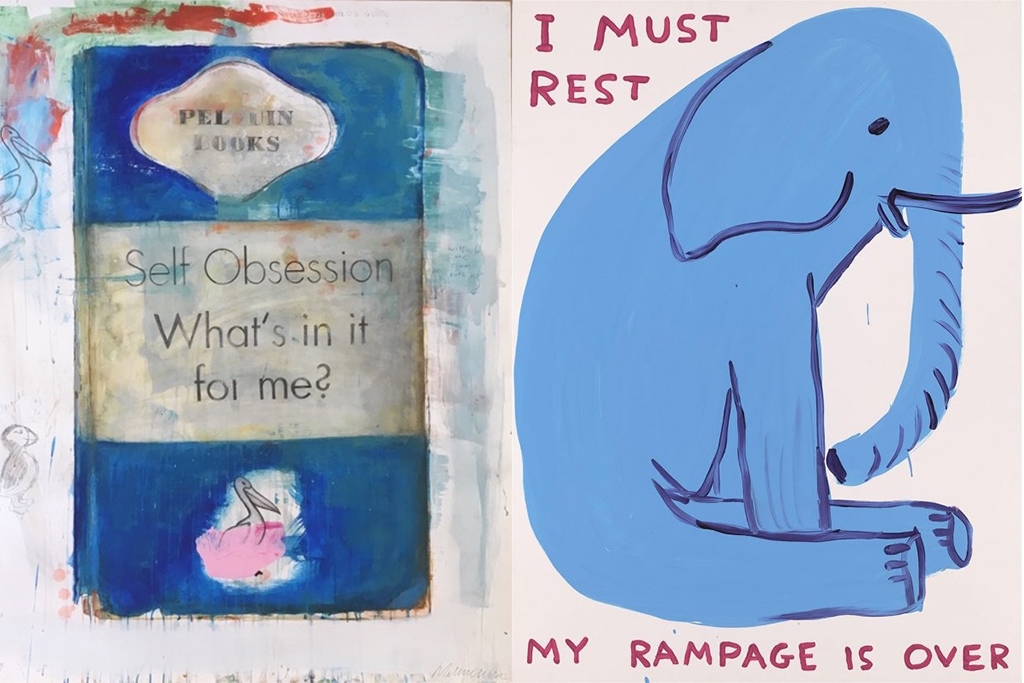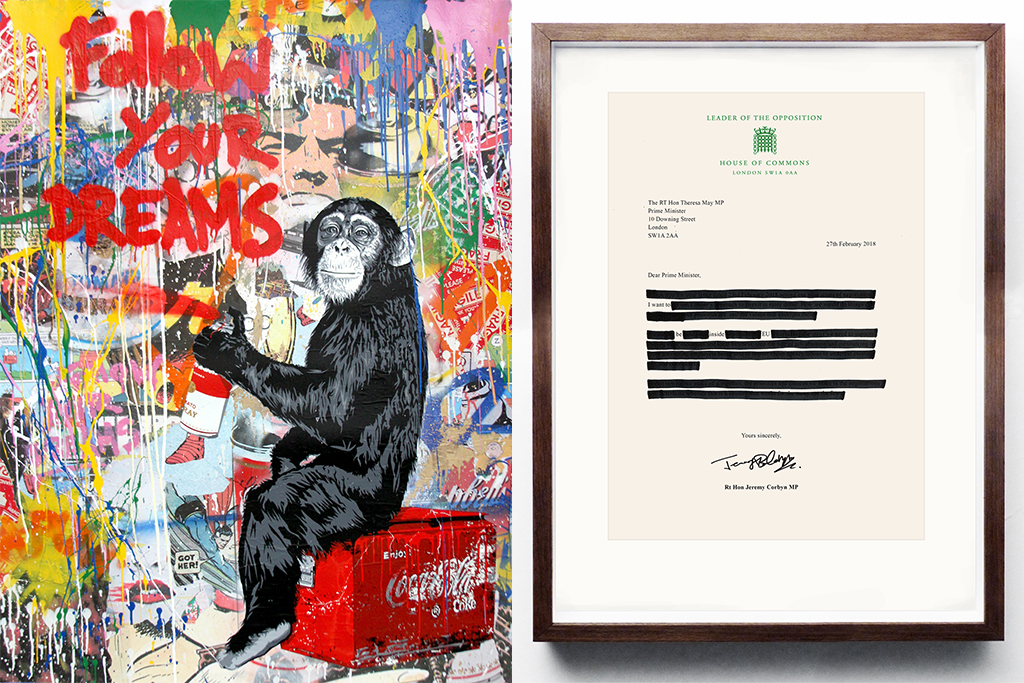Interview with Matthew Lord, Curator of Between the Lines
Bringing memes to Mayfair
This post may contain affiliate links. Learn more
At a time when a TV programme’s corresponding mick-taking Twitter account is more popular than any of its actual footage, and attempting an ‘Instagram vs reality’ post has the power to prompt an existential crisis, text art is having a moment.
Exploring why the relationship between the written word and visual art is particularly potent right now, Between the Lines is the newest exhibition at the Maddox Gallery in Mayfair. We spoke to the curator, Matthew Lord, to find out more about the show.
Where did the idea for this exhibition come from?
No single piece inspired the exhibition as such but over the last 12 months we have seen a huge global interest in text art, particularly text art that is humorous that artists such as Christopher Wool, Harland Miller and The Connor Brothers all do brilliantly. Words represent the urban landscape of city dwellers: billboards, signs, algorithm-inspired data on your personal devices… the list goes on. Partial and complete words and sentences reflect the world we are living in now, so it feels like the perfect time to hold this sort of exhibition.

‘Self-Obsession – What’s In It For Me?’ by Harland Miller and ‘My Rampage Is Over’ by David Shrigley
The Connor Brothers’ and Harland Miller’s art exists in a particularly hilarious realm. Does adding words to visual art often make it funny and, in particular, satirical?
I don’t think adding words necessarily means it makes the works satirical and not all the works in the show are humorous, but there is definitely a playful aspect to many of them.
When it comes to language, words often have multiple connotations and people take away different meanings, so text art can be very subjective. The overall theme of the show highlights the power of words, whether the works are humorous or not. The directness and concise nature of the text in the artworks on display are always impactful.
Other than being text-based, what themes do the works share?
All of the artists featured in the show are artists of the 21st century and each of them have a mutual connection or understanding of language. Text art originated in the 1950s, but I thought it would be interesting to select works from living artists to show the relevancy of text-based art in contemporary culture.

‘Everyday Life’ by Mr Brain wash and ‘I Want To Be Inside EU’ by The Connor Brothers
It’s everywhere at the moment. Do you think the popularity of memes and gifs on social media and channels such as Instagram have given text-based works greater currency?
Definitely. Social media has certainly made the art world more popular and democratic and text art has become something of a trend on social platforms. Viewers really seem to engage with it. I think this is because it evokes more of an immediate response in comparison to abstract artworks.
I find Tracey Emin’s artworks most provocative. Does framing words as art mean it can explicitly say certain things that might be contentious if spoken aloud in conversation or printed in a newspaper?
Art is supposed to be provocative and the viewer should have a reaction, whether it be positive or negative, emotional or angry – that’s what art is supposed to do. I think this sentiment is shared by many of the artists included in the show so yes, the works may be contentious but they are vital.
Between the Lines is on at Maddox Gallery, Mayfair from 6 to 26 June, featuring renowned works by an impressive array of eminent artists including Tracey Emin, Christopher Wool, Ed Ruscha, Mel Bochner, Harland Miller, The Connor Brothers, Richard Prince, David Shrigley, Jean-Michel Basquiat, Banksy, Massimo Agostinelli, Grayson Perry, Brendan Murphy, Andy Warhol and Mr Brainwash.
